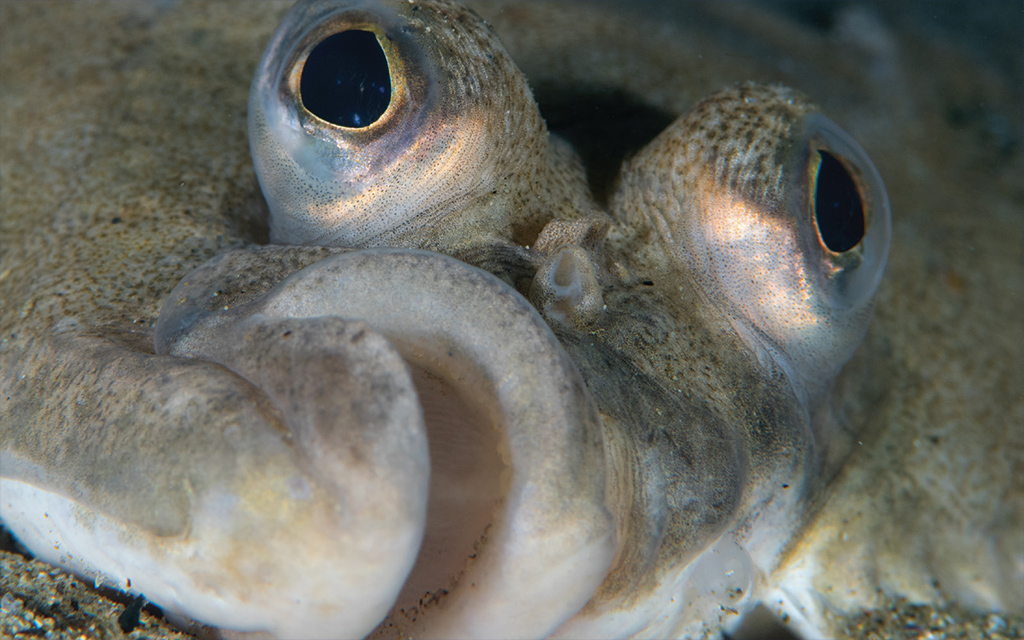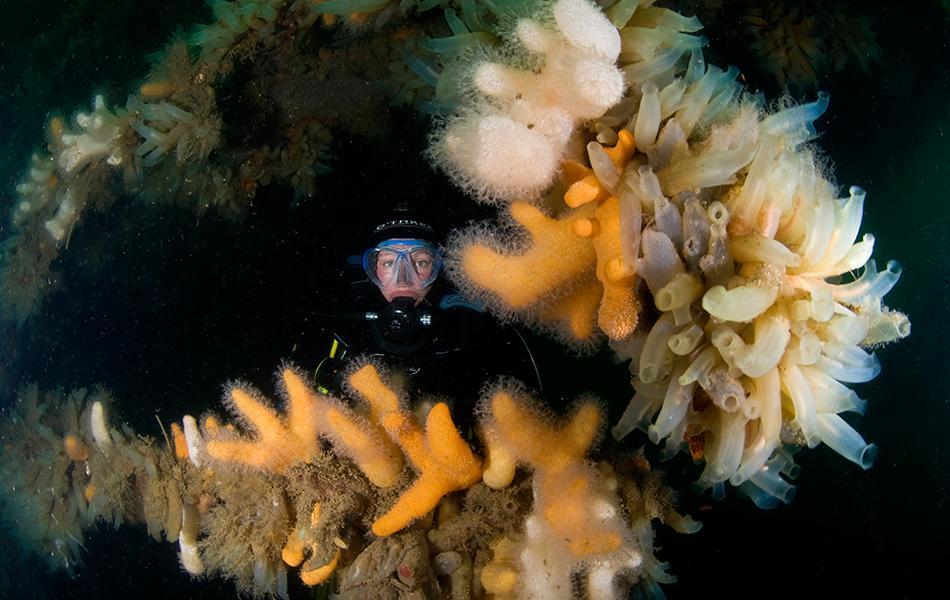
Flatfish are an unexpected triumph of evolution, says Karen Boswarva, who explains their intricate life cycles.
It was during a Seasearch course that I was asked a thought-provoking question. We were at the species identification part, discussing the major groupings of fish. We were looking at distinct characteristics that tell them apart enough to help you find them in an ID guide.
As a group of fishes, we can all agree that flatfish are quite recognisable. The clue is in the name. A pancake thin, flat fish with boggly eyes on the top. Worldwide, there are more than 700 species inhabiting everything from the deep ocean hydrothermal vents to shallow freshwater rivers. As divers we see flatfish on sandy/muddy bottoms or rocky reefs, while snorkellers may catch a glimpse of a tiny juvenile at the edge of the tide.
ID gets tricky when you want to tell species apart. Colour is never the best indicator. You need good photographs of the overall body and fin shapes, the body patterns, the eyes, and finally the ability to accept that your picture may never look like the ones in a book (mine rarely do).
To help, we’ve historically taught that there are left sided (sinistral) and right sided (dextral) flatfish. This sidedness depends on which way up the flatfish is laying down. If the right pectoral fin (the side fin) is facing up then the right eye is dominant, and vice-versa with the left. Sidedness tends to be specific to species. So next time you spot one first try to distinguish whether it’s a lefty or righty.
There are of course always exceptions to this rule that make ID harder. The life history of flatfish is actually pretty funky! As larvae, they swim about the same as any other fish in the sea. Upright in the water column with their left and right sides symmetrical, one eye on each side of the head. After a couple of weeks, the larvae drop to the seabed and begin the most remarkable metamorphosis.
If the right pectoral fin (the side fin) is facing up then the right eye is dominant, and vice-versa with the left. Sidedness tends to be specific to species. So next time you spot one first try to distinguish whether it’s a lefty or righty
The skull completely remodels, the eye closest to the seabed relocates to the top. Pigments starts to develop on the top side. The brain, heart, and gut change shape and move into a more suitable place in the body. I watched as a look appeared on the student’s face. “What causes the fish to drop on to the seabed, and if it’s not random then why and when do some species go left, and others go right?” they asked? A fantastic question that had me immediately searching for answers.
There’s some interesting and complex flatfish research out there! It’s widely accepted that the side a flatfish falls on is controlled by genetics, a missing gene results in random side selection and a high percentage of reversed individuals.
But what causes it to fall in the first place? Metamorphosis is triggered by elevated levels of thyroid hormone, the same process that turns tadpoles into frogs. But does it start while the fish is swimming normally and cause it to fall on its dominant side, or does falling on its side activate the hormones?
All fish have a dorsal light reflex; it enables them to always swim upright towards a light source until balance is established through sight and gravity. If the thyroid hormone increases and the eye starts to migrate while the fish is swimming upright, the angle of light would change, causing the fish to gradually tilt further to one side till it falls over – a plausible answer. However, flatfish larvae are notably weak swimmers, and fossils dating back 53 million years show incomplete eye migration. Left/right sidedness was random, and the eyes remained on top of the head. Meaning eye sidedness and species-specific selection of sidedness evolved after flatness.
Being weak swimmers certainly works in the flatfish’s favour. These evolutionary adaptations have offered a clear advantage, combining 360-degree vision with camouflage for spotting prey while evading predators – and cameras!
Article 'Fun with flatties' by Karen Boswarva first published in SCUBA magazine, Issue 153 March 2025.

 Author: Karen Boswarva | Posted 06 Apr 2025
Author: Karen Boswarva | Posted 06 Apr 2025



